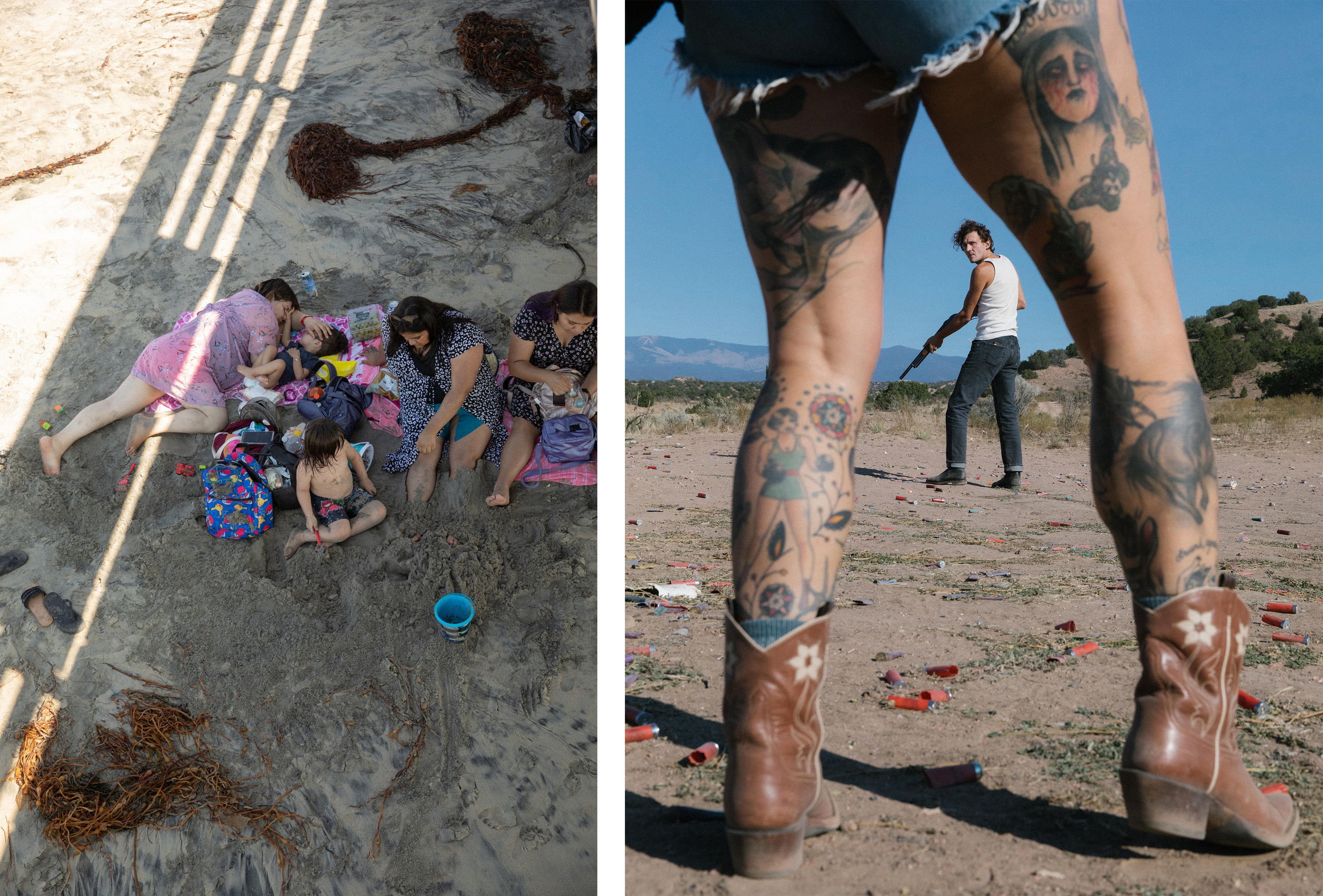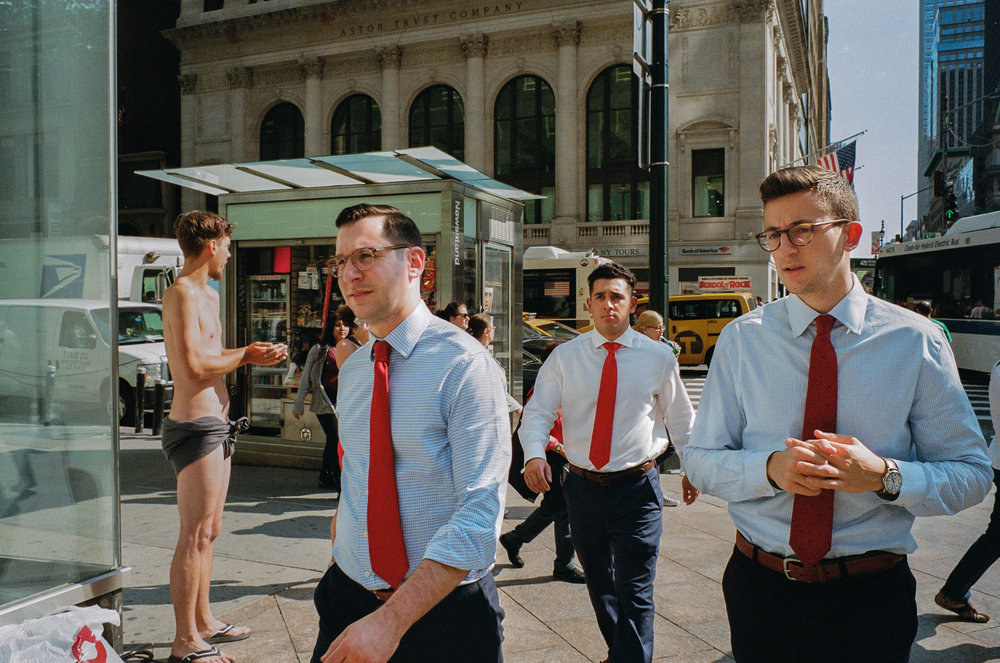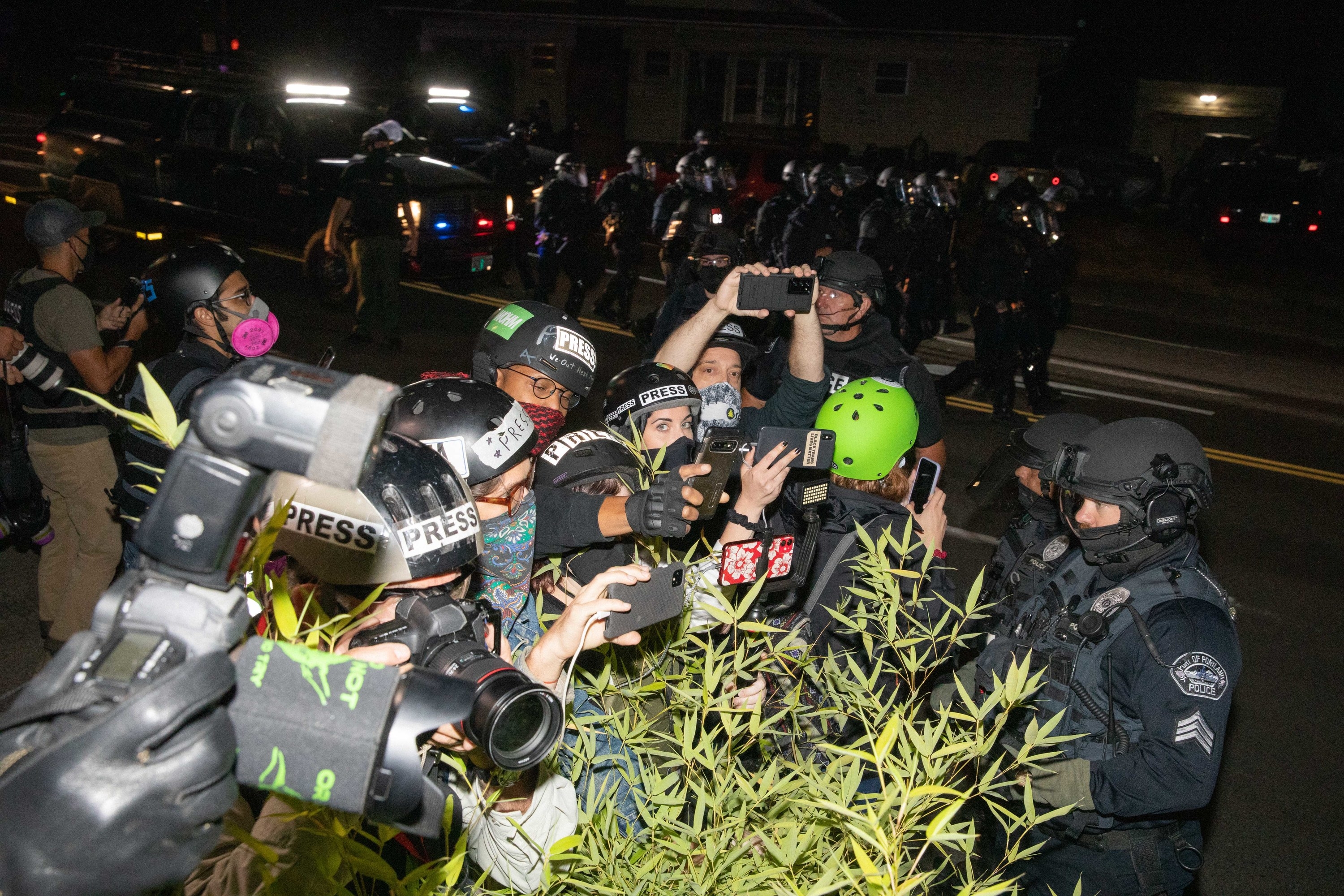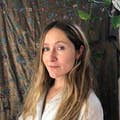

New York–based photographer Sinna Nasseri has been interested in politics ever since he was a young punk carving “A” for anarchy on his middle school desk. Four years ago, after a stint as a lawyer working in Midtown, he borrowed a friend’s camera and fell in love with photography, turning his lens first on those same Midtown streets where he used to commute.
Nasseri started 2020 with an idea — to be on the road for most of the year, photographing. Not only was this the perfect year to eschew planes for the open road (in his dad’s nondescript gray Volvo, he told me), but it was an momentous time to be crisscrossing the country and talking to Americans about how they were processing everything that happened in 2020 — the political tensions leading up to the election, killings of Black men and women and the responding swell in the Black Lives Matter movement, and the coronavirus.
Nasseri’s photographs and video clips from around the country seem like they’re quick uploads to an Instagram story. But in reality, they’re thought-out and carefully edited vignettes from a country split on so many issues, with the goal being to share ideas without passing judgment.

Where are you right now?
In El Segundo, in a casita with two dogs named Lenny and Earl.
I’m taking some time to digest the year. It’s necessary in order to be able to do this kind of work, where people are yelling at and around you constantly.
Can you tell me the CliffsNotes version of what you've been doing the last year?
I sort of had an idea to be on the road for most of 2020. I have a degree in political science, and I was really interested in the election and politics. I figured I could merge two of my real interests, photography and video and politics, into a larger project. I ended up driving about 20,000 miles and visiting 35 or so states.
I knew 2020 was going to be a historic election, a big deal. I knew the country was in a place where there would be a lot of emotion. My plan was to take off on my own and follow the campaigns, starting with the Democratic primaries in February. But I also wanted to photograph people and environments that I came across in my travels that didn’t have an overt connection to politics. My original plan was to just show up without an assignment, talk my way into places, and see what happened. Then Olivia Horner of Vogue asked me to do a story on the Iowa caucus before my project had even started, which was a real blessing to have more access than I probably would have had otherwise.
Being feet away from Bernie Sanders and Joe Biden without having much experience photographing politics was surreal. But it all fit into the project I wanted to do. I’m not looking for an A1 photo, where everything is really clear and journalistic. My style is meant to be a bit cryptic.
One thing that surprised me was how close I was able to get to the candidates and some of their unguarded moments, which allowed me to photograph in surprising ways. There’s more freedom than you think to photograph the way you want compared to a Trump rally, where you’re stuck in a pen and it’s much harder.

Did you have any favorite political photographers starting out?
Not political per se, I knew of certain people like Mark Peterson for sure, I found the stylized way he was working interesting. And then historical photos I came across like Garry Winogrand, who has some politics mixed in to his work. I was more versed in vivid large-scale scenes of crowds, which I just used as a template in a way. A wider angle lens, you see a lot going on, a drama coming through and a lot of different aspects of the photo to study, that’s what I was interested in.
What was your photo trajectory?
Before this project, I didn’t really have much of a photography career. I was working as a lawyer, I had gone to law school at Fordham and was working in Manhattan. I wasn’t into it, I was pretty bored and working long hours. I started to feel my intrinsic sense of humor and love for life fading away. So I began doing work that was personal, trying to break out of a corporate lifestyle I had somehow let myself fall into. I had gone to so many years of school, I never had a chance to step outside of that and try something else. I was doing a lot of weird stuff — psychedelics, meditation, traveling. It really helped snap me out of a nightmare scenario.
Some photographer friends of mine lent me their cameras, and then I discovered the work of Daniel Arnold. He really influenced me, and I just started walking around New York. That was it, I completely threw myself into it. I started reading photo books at libraries, gave myself little assignments, wrote, and published my own work.
I started photographing in Midtown, because there is a rush of people and these wide open avenues. Fifth Avenue was standard, that’s where I really started. I used to work in Midtown when I was a lawyer, and when I quit that job to pursue photography full time I would just hang around where my old office was and would see my former colleagues, who didn’t recognize me anymore. That was kind of funny. I ended up making a project called End of Day, from that period.

How did you start incorporating videos into your photography?
I was walking around and would see something that I thought couldn’t be totally captured in a photo, so I started using video. I would go out and take 50 videos every day, I think I have 9,000 on my iPhone from the last 8–9 months. I would have my camera, and then my iPhone for video, and I was constantly switching back and forth taking pictures and making these little vignettes. I was really influenced by Sam Youkilis, his style of work tailor-made for Instagram.
The interviews were something that really started happening over the course of this project. I started interviewing people with my iPhone, and it became a really huge part of what I was doing. I got all kinds of different perspectives, and for some reason people would really open up to me. These interviews will sometimes last 20 or 30 minutes, and then it’s fun to edit it down to that 30 seconds when they’re truly saying something unique. It’s a beautiful feeling to approach anyone and know that they’re going to have at least one thing to say that’s going to get me really excited.
Sometimes I would interview one person, get their thoughts on politics, and then use Instagram stories to intersperse that with someone from the same town who had different ideas and then mix all that in with environmental scenes. I wanted to show my audience all kinds of different views from a place of empathy, because even if it was outrageous, you were hearing it from a real live person.
There was a lot of trial and error with the video work, and pushing myself every day to talk in depth with many people and edit it all myself in one day. I was able to do that consistently, and come into a style of my own, which I found really gratifying. And the last three stories for Vogue, we did a ton of videos and vignettes and I think people were able to really connect with that. You got to see what was going on in the country’s collective head.
How do you find the people you end up talking to?
I love finding people who are a little different and have a little flair, so those are the people I approach. I really follow my gut. Sometimes I can sense when people are emotional, so you know that they're probably going to be more honest and forthright and you know it’s going to make a better interview. And when I’m at an event, I look for the hot spots, where tensions are high and you can tell that’s where the action is going to happen.
I like to follow up with subjects and talk to them one-on-one after something intense happens. In St. Augustine, I took videos of a young Black man named Zac Taylor with a BLM sign being surrounded and intimidated by Trump supporters. He was 18, just out of high school, and had all of these older men calling him trash and yelling at him. It was crazy, and I was able to pull Zac aside and do an interview with him, and what he said really stuck with me.

I read that you're always trying to push it (yourself?) more than the photogs around you. How do you do that?
It’s more a little voice that’s in my head: If you see a bunch of people taking the same photo, it’s almost like a trap — there’s something off there. I don’t think there’s anything wrong with what they’re doing, but I want to find something different. The one thing that is drawing other photographers in at that moment, I want to step back and consider it in a wider context. I like to photograph the media itself, and examine their (our?) role.
The photograph of Pete and the bowl — a bunch of other photographers were taking shots from all different angles, and I just sat by this bowl for five minutes and was able to make one photo that I liked. I’m lucky to have the freedom to focus on one thing that I find captivating and really nail it, and then I’m happy.
That’s a big part of pushing it — showing a different view, my view, and doing that extremely well is the goal.
What do the next four years hold for you?
I hope to make a book, and a film as well. A lot of things to get done; putting this all together, finding the right editor and publisher. I have some ideas. I’d like to keep going with what I’ve scratched the surface of — video and stills and traveling and talking to people. These structural issues aren’t going anywhere. The election of Biden isn't any kind of end to the internal strife in our country.
I’m going to keep continuing as long as it's still interesting. It’s an exploration of American right now, and that includes everything, so it’s not going to get boring. ●

